MXA MID-WEEK REPORT No Glen Helen Or Hangtown Nationals? Up Close With Tedesco’s YZ450F, New Products, Valli Motorsports Vs Pro Circuit, Factory Vs Privateer, Tall Tales In The R&D World – What Do Baseball & Motocross Have In Common?
 ÿ
ÿ
Hard to believe that the AMA Nationals would not race at Glen Helen. It draws their biggest crowd and is the most challenging, but it is a possibility (according to the factory team managers).
As shocking as it sounds, with less than sixty days to go until the first round of the AMA National kick-off at Hangtown, it sounds like thereÿis at least a 50/50 chance that the first two rounds (plus round #9 at Washougal) mightÿnot run. The source of the rumors has been factory team managers (who have been telling everyone the rumor–which, you must assume, they get from the sanctioning body).
Crazy, unbelievable, frightening, but true! As of the Dallas Supercross, the race promoters of Hangtown, Glen Helen and Washougal are all at steep odds with MX Sports over accountability, contract length, rights, back gate ticket sales and just about anything else you can think of. Right now it’s apparently in the hands of the lawyers. And according to reports, the tracks and sanctioning body aren’t budging. How scary is that? The people who really know (and that includes MXA‘s Jody Weisel and MX Sports’ Davey Coombs) aren’t talking.
Word on the street is thatÿas an alternative to the hilly Glen Helen round, MX Sports is considering running atÿthe National at the flat Pala Raceway near Rainbow, California. No other optional venues for rounds # 1 and 9 have been mentioned.
Speaking of venue changes,ÿlast season’s talk of the U.S. Open Supercross going away completely has been alteredÿand now there’s talk of it simply moving to the same Sam Boyd stadium where the final round of the AMA/Monster Energy series is currently held.
And yeah, we also heard thatÿMike Alessiÿhas split from KTM, but no real word on that one.
MXA PRESS RELEASE: Oakley Signature Mayhem Goggles
ÿ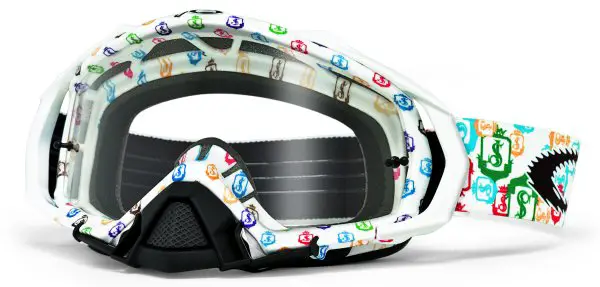
MXA PRESS RELEASE: Scott’s YZ450F Steering Damper
Scotts Performance is proud to announce the completion a bolt-on stabilizer kit for the 2010 YZ450F. Scotts revolutionary new way of mounting this kit compliments the YZ-F nicely and works with or without the new IMS fuel tank.ÿÿ
Shown here is the complete Stabilizer kit for the YZ450F using the stock triple clamps. This kit has a very unique mounting system and fits perfectly on a frame that is not symmetrical anywhere. The kit includes everything you need to mount it, including step by step pictured instructions, all necessary hardware and Owner’s Manual. This kit slides right on and enhances the bikes performance considerably. Comes with 3 fully adjustable circuits and is the only stabilizer with a high speed valve.ÿ$485. Check the Scott’s Performance website for other new YZF products.
MXA MINI-VIEW: Shawn Norfolk ? Gone Fishin’ R&D
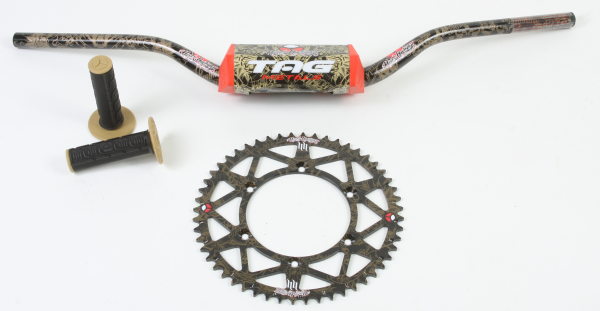
“Well, it all started with the fact that I love to fish and one day (after work) I was fishing at the nearby Castaic Lake. As I was waiting for the fish to bite I was looking at my Shimano rod and I noticed that the tapered pole was running full graphics and I started to wonder if it would be possible to do the same thing with motorcycle parts, specifically a handlebar so that the finish would last and not get rubbed off by the tie-downs. We started talking to our vendors about it and six months later we had our first pre-production versions of the Hart & Huntington handlebars done. We look at it like it’s clothing for your bike.” For more info, check out Tag Metals.
MXA MINI-VIEW: Scott Boyer ? Still Swingin’ For New Fences

Another Indy show conversation was with Scott Boyer who had some interesting points to make on how technology from one sport can cross-over into another sport no matter howÿ unrelated they might seem.
Scott: I graduated from the University of Utah back in the 70’s with a degree in marketing and got a job with Lange as a ski boot technician. For five years I basically followed the Pro skiers around the circuit helping them develop new ski boots. I had ridden dirt bikes a little bit, but in June of 1976, when I wasÿ at U.S. Ski team camp on Mt. Hood, Phil and Steve Mahre talked about going to see a motocross race nearby. Since I had the van I drove and it was ended up being a Nationalÿat Puyullup! One of the guys at the camp was the Scott ski pole tech and he told me that there might be some opportunities at Scott, so when I drove home I stopped by their office in Sun Valley, Idaho, and the next thing you know I had a new job. Don McGee was the in-house motorcycle guy as Scott as they already been getting involved in the offroad world developing a new motorcycle goggle based on their ski goggles. Don’s wife Mary was racing Baja back then and the full foam frame of the ski goggle was a big improvement at the time over the other goggles (Carerra) that were designed withe open vents. They hired me to design a new plastic motocross boot and I remember the first race we went to was the 1976 Mid-Ohio GP. I went from being a “racer chaser” on the slopes to doing the same thing with guys like Bob Hannah and Billy Grossi at the motocross races.
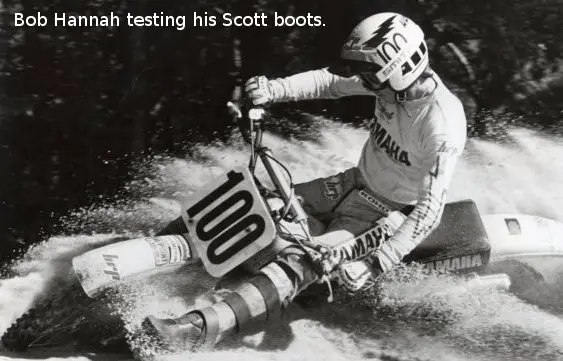
MXA: So the gig at Scott was all about the boot?
Scott: Yeah, the boot project and their continued effort with goggles. I was the project manager for the boot and Chris Dawson (now at MSR) was the designer. Mark Blackwell and A.C. Bakken were the first two Pro riders that used the boot, but Danny LaPorte was the first Pro motocross racer we approached with it. Danny never took to it, but when Bob Hannah heard about it, he came to us to see about using it. He had been using Hi-Points and loved them, but he had bad ankles and was looking for the best way he could to protect them so he could protect his career. Bob used them for about four years, but when the ski industry had two dry years, Scott pulled-out.

Scott: In 1980 Chris, Bob and I were part of a group thatÿ started Hannah Racing Products and the FlakJak was our big product. Then, in 1985 I moved to Southern California and started working with Eddie Cole at Answer Products and we developed a number of projects that played a role in both the mountain bike and motocross industries. At the time Answer was really successful in making chromoly handlebars. But, in 1987, Team Honda switched to the new aluminum bars that Renthal had introduced. Answer responded with the AlumaLite, but to me that wasn’tÿ the answer ? it didn’t make sense to basically make the same product that Renthal did, we needed to do something different.
Scott: Yes. Around the same time Answer had been working with Easton on developing some new aluminum handlebars for the mountain bike market. Easton’s key engineer was (and is) a guy name Chuck Texeira and from discussions with him about the mountain bike bars, it occurred to me that we could use the same technology to do a motorcycle handlebar differently. Chuck believed that the better way to make a bar was to use oversized diameter, taper-walled aluminum without a crossbar. In testing we realized that Chuck’s version was much stronger than the standard 7/8″ bar that basically bent whenever you crashed. We called it the Dura-Lite, but found out afterwards that someone in the train industry had trademarked the name. We didn’t think they would care since there was no similarities in the product or use. Well, they did care so we had to find a new name ? ProTaper handlebars were born. I remember we tested them with Yamaha first and none of the star riders would try them, but then Keith McCarty said he had an up & comer who would. That was Damon Bradshaw and after he tested them he wouldn’t give them back so he he used them in a big race at Glen Helen and they really got a lot of attention.
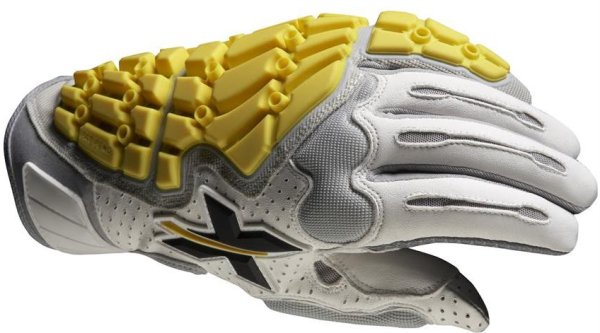
MXA: So what’s your latest deal with the batting gloves?
Scott: Basically, once again we’re looking at using known technology for new applications ? we’re taking known concepts of offroad hand protection and applying it to baseball. It’s taken us over two years to develop them; playing with different formulas of padding and working with players. It’s funny to think about how long baseball players have been getting balls thrown at them and yet no one before has really tried to increase the hand protection which is so vulnerable. At XproTex we have a wide range of gloves for use by everybody from Pro to little league players and so farÿwe’ve been gettingÿveryÿpositive response.ÿÿ
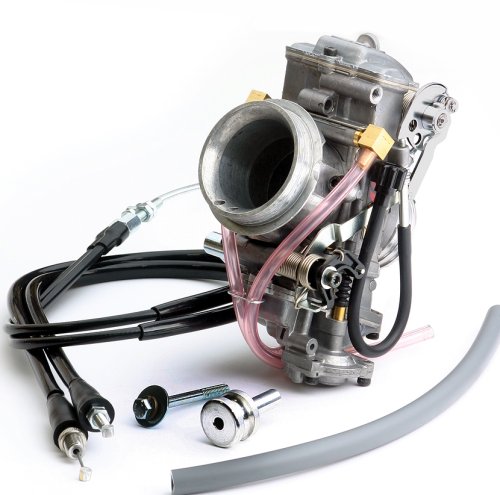

MXA CLOSE-UP:ÿIvan Tedesco’s Valli Motorsports Yamaha YZ450F


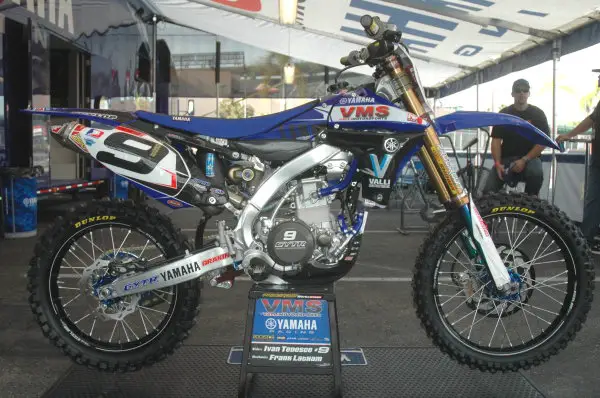




 ÿ
ÿ
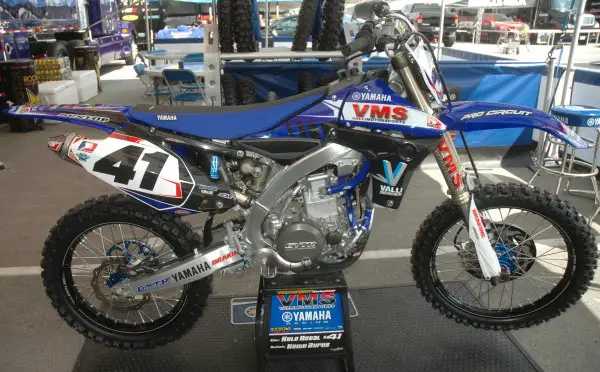

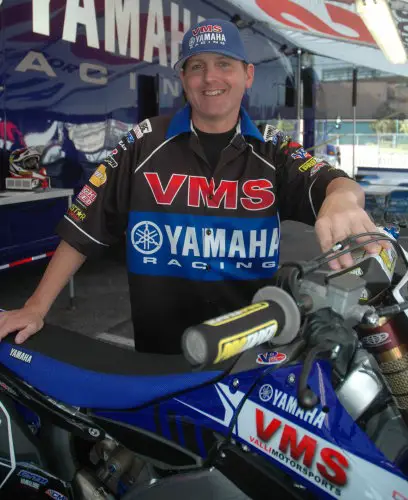
MXA: You worked for Pro Circuit for over five years and wrenched for Ryan Villopoto when he won all his titles. Now you’re the team manager for Valli ? how different is your life now?
Jon: I have a lot less gray hair that’s for sure! In fact, I never had any gray hair until I started working for Mitch. I’m probably not like your typical team manager because I still work on the bikes. I like to go to the track and turn wrenches ? it’s still fun and I won’t hesitate a moment to do it.
Jon: It’s a lot more laid back for sure, but we put our game face on just like everyone else and all we expect from the riders, from everyone is that they give 100% effort. The intensity level at Pro Circuit is a lot higher. (Valli Team owner) Chad is new to the game, so he gave me the reins to run the team. All the guys here know what they’re doing and we get along like a team. There’s a lot less pressure here than there is at Pro Circuit, in fact we really don’t have any pressure to win. I mean we all want to, but we’re a new team so the expectations aren’t as high here as they are over at Pro Circuit. All it takes is one look at all those # 1 plates on the Pro Circuit truck to know what the expectations are like over there.
Jon: There’s not much difference between a Kawasaki and a Yamaha or a 250 and 450 ? a dirt bike is a dirt bike.
MXA: So what are your thoughts on how the season so far?
Jon: I think we’ve met all the goals we set for ourselves.ÿ Coming into the season as new as we were, our big goal was to consistently run in the top ten and just get on the box at least once and we’ve done both of those.

MXA: You worked with Ivan when he was a factory Honda rider. What are the big differences between working on aÿ factory team versus a privateer team?
Frankie: I’d say the biggest difference is just the budget for changing parts. Over at the factory they don’t have a budget for that. At Valli have to pick and chose where we spend our resources and we definitely need to see more reward out of the money we spend. Our bikes have come a long way in a short amount of time and with our limitations it also takes more time to address a problem. But, if you look at our bike, we have the good suspension, the motors are fast and even the Joe Gibb’s team has been really cool and they’ve sold us some parts.
Frankie: In the big big picture I think they’re all the same. Sometimes you wonder why they did something in the motor a certain way, but eventually you learn their engineers way of thinking. Right now we’re still working on tuning and adjusting the bike to meet Ivan’s technique for starts.
MXA PRESS RELEASE: Gilles Tooling Chain Adjuster
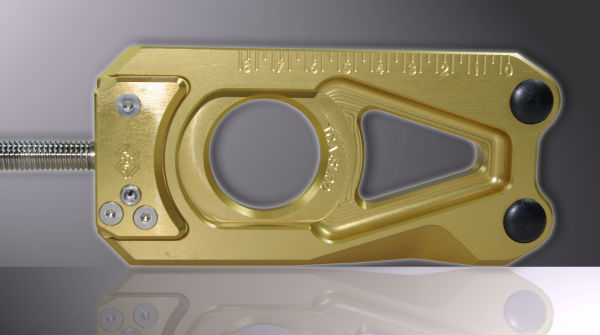

Best regards,
Baz







Comments are closed.